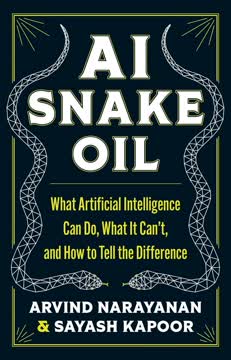Key Takeaways
1. Women's opinion of men has evolved from need to disinterest and annoyance.
Women simply do not want men as much as men want women.
A shifting dynamic. The author observes a generational shift in women's views of men, moving from a historical necessity for survival and provision to a modern declaration of independence. This evolved through phases: acknowledging men weren't needed economically, then realizing women didn't desire most men romantically, leading to annoyance at unwanted male attention, and for some, outright hatred fueled by various factors.
Disinterest and annoyance. Empirical data and observable behavior suggest a widespread lack of romantic and sexual interest from women towards the majority of men. This is seen in:
- Online dating statistics (women finding 80% of men unattractive, low swipe rates)
- High female-initiated divorce rates (around 75%)
- Women flaking on dates (56-70%)
- Female obesity rates (prioritizing food/sloth over attracting men)
- Excessive tattoos/piercings (prioritizing self-expression over male preference)
Cultural reinforcement. This disinterest is amplified by cultural messages, from media portraying men as unnecessary or villainous to social norms punishing male romantic overtures (e.g., at work). This creates a climate of trepidation and distrust between the sexes, bordering on adversarial, and for a significant minority, manifesting as conscious or ideological hatred.
2. Men produce significantly more critical economic value than women.
Of the $25 trillion in GDP men produce $15.11 trillion of it, or 60.5%.
Unequal contribution. While the total US GDP is high, the contribution is not evenly split between the sexes. Men, despite having a slightly smaller population, generate significantly more GDP per capita ($91,970 vs. $58,992 for women). This suggests that removing men would immediately lower the standard of living to roughly that of Canada.
Categorizing labor. A deeper look at specific job categories reveals where this disparity lies. The author categorizes jobs by value:
- Worthless Jobs (welfare, obsolete, damaging): 2/3 women, 1/3 men
- Marginally Valuable Jobs (service, media): 52% women, 48% men (but men earn more)
- Real Jobs (needed for economy): 57% men, 43% women
- Critical Jobs (essential for existence): 70% men, 30% women
Real vs. frivolous. An all-female economy would see 50% of labor in frivolous or marginally productive jobs, requiring massive taxation or imports to function. An all-male economy would have two real jobs for every bogus one, leading to higher wealth and lower taxes, akin to living in Singapore or Switzerland based on gross GDP, and Monaco or Lichtenstein based on real production.
3. An all-female economy would face severe shortages in essential industries.
Society quite literally couldn’t wipe its ass without men.
Infrastructure collapse. Beyond general GDP, men dominate jobs absolutely critical for maintaining physical and technical infrastructure. Removing men would decimate capacity in essential areas:
- Construction: 1/5 the workers
- Mining, Oil, Gas: 1/3 the workers
- Transportation: Half the workers
- Manufacturing: Half the workers
Specific job shortages. Looking at highly male-dominated jobs (95%+ male) highlights the severity: mechanics, carpenters, electricians, construction laborers, machinists, welders, firefighters, truck drivers, repairmen, software engineers, civil engineers, plumbers, farmers, cops, military. Without men, there would be no running cars, housing, electricity, operating machinery, materials, computers, or functioning supply chains.
Third-world standards. Projecting these shortages onto daily life paints a grim picture: tiny living spaces (3% of current size), overwhelmed sewage systems (1/6 capacity), drastically reduced electricity (93% drop), severe food shortages (87% drop in farming), minimal car ownership (15% of one car per person), and increased crime (on par with Honduras). Averaging key metrics puts an all-female economy at the standard of living of Kenya ($5,700 GDP per capita), effectively a "war-torn, third world shithole."
4. Technological innovation is overwhelmingly driven by men.
Consequently, nearly ALL of humanity’s advances and standards of living have been made by, and are owed to, men.
Innovation is key. Economic progress and standards of living are fundamentally driven by technological advances and innovation, not economic policies. The question of who invents is paramount to predicting future prosperity.
Overwhelming male dominance. Research into major inventions of the past 50 years and Nobel Prizes in science fields (Chemistry, Physics, Medicine) reveals a stark disparity. While women have made some contributions, the vast majority of groundbreaking innovations come from men or all-male teams.
- Top inventions of past 50 years: Vast majority by men (microwave, LED, internet, etc.)
- Nobel Prizes (past 50 years, science fields): 136 to men/all-male teams, 14 to coed teams, 0 to sole-female/all-female teams.
Stagnation without men. The author argues that without men, technological innovation and progress would essentially halt or slow to a glacial pace. Society would struggle to even maintain existing infrastructure without men entering STEM fields and trades, leading to stagnation and decay.
5. Men are increasingly withdrawing from the labor force and social participation.
Men are simply exiting the labor force and doing the least amount of work possible, and at the highest rates in all of recorded US economic history.
Declining work ethic. Data shows a clear trend of men working less and participating less in the economy. The male labor force participation rate has dropped significantly since the 1950s (from 87% to 67%). Young men (16-19) are also less likely to seek work (35% today vs. ~50% historically).
Less activity, fewer hours. Beyond just not being in the labor force, men across age brackets are increasingly inactive (not in school, work, or training). Those who do work are working fewer hours annually (dropping from 2,060 in 2007 to 2,000 today). Men are also retiring earlier, though recent trends show a slight increase due to financial necessity.
Avoiding investment. Men are also less likely to invest in education or training for careers, particularly in college where they are now only 40% of students. While this might save them from worthless degrees, trade school enrollment is also stagnant or declining, exacerbating shortages in critical fields. This trend suggests a future where fewer men are equipped or willing to fill essential roles.
6. This withdrawal is enabled by the welfare state and lack of incentive.
Your basic, college-freshman democrat/socialist politics have merely enabled these men to remain parasitic boys.
Eliminating the "stick". The author argues that men's withdrawal is enabled by the generous welfare state, disproportionately voted in by women. Programs like EBT, WIC, Section 8, and parental subsidies eliminate the threat of starvation, homelessness, and cold, removing the negative reinforcement that historically compelled men to work for survival.
Removing the "carrot". Compounding this is the lack of positive incentive. Decades of cultural messages telling men they aren't needed, coupled with women's general disinterest or hostility, remove the "carrot" of romantic relationships, family, and social validation that traditionally motivated men to achieve and provide. Without a stick or a carrot, many men choose inaction.
The cost to women. This enabling behavior has ironic consequences for women. They complain about the lack of "good men," but their voting patterns created a system that removes the necessity for men to develop the work ethic and financial stability that define a "good man." Furthermore, women are increasingly bearing the financial burden of the welfare state they voted for, including the rising number of men collecting mental disability checks.
7. Sex and attraction are the primary motivators for men's economic production.
Sex (or more Darwinistically speaking, progeny) is what gets men out of bed in the morning...
The engine and the fuel. The author posits that sex (including love, family, and progeny) is the most powerful economic policy, acting as the primary driver for men's economic production. Men are the engines, and women are the fuel. Without this fuel, the engines won't run, regardless of other economic stimuli.
Men's core desires. To motivate men, women must provide the "fuel" of specific qualities that men are biologically wired to desire. These include:
- Physical youth and beauty (not obese, mutilated, or old)
- A sweet and kind demeanor (not nagging or combative)
- A willingness and enjoyment of sex (not obligatory or chore-like)
- A willingness and desire to hang out (showing genuine interest)
Foundation for family. Additional qualities that further incentivize men by enabling family formation are:
- Being a good mother (prioritizing children over career)
- Having no other man's children (avoiding genetic revulsion)
- Loyalty (commitment and fidelity)
- Not initiating divorce (removing the biggest deterrent to investment)
Modern "fuel" quality. The author argues that the majority of modern women lack these qualities (high obesity, debt, single motherhood, psychotropic drug use, body mutilation, high divorce rates), rendering them ineffective or even damaging "fuel" for men's economic engines.
8. Women's current choices conflict with economic reality and men's desires.
When women say they are "liberated" from men, they're not joking or trying to be edgy.
Prioritizing independence. The author contends that women's life choices reflect their genuine disinterest in men now that they are not economically dependent. They prioritize careers, education, travel, and self-expression over conforming to what men desire, as evidenced by their educational choices (worthless degrees), lifestyles (obesity, tattoos), and stated priorities (men ranking low).
Ignoring reality. While women are free to make these choices, they conflict with the reality of what motivates men and what is required to maintain a first-world economy. No amount of wishing or political ideology will change male biology or the need for essential labor. Women's choices, while personally liberating, are economically unsustainable when men withdraw.
The "Frankenstein soy boy". By telling men they weren't needed and lying about what they actually desired (promoting sensitive, effeminate men), women have socially engineered the very type of man they now complain about – the weak, financially unstable, emotionally-driven "soy boy" who aligns with their politics but cannot provide or protect. This is the consequence of prioritizing political correctness and politeness over biological and economic truth.
9. Society faces a stark choice: women step up, accept poverty, or return to tradition.
And so women, whether they like it or not, face an incredibly important choice and the consequences that come with it.
No consequence-free option. The author argues that society, specifically women, must confront the reality that men's withdrawal has removed a critical component of economic function. There is no magical solution or external savior. Women must choose one of three paths, each with unavoidable consequences.
The Three Choices:
- Be Equals to Men: Women genuinely step into traditionally male roles at equal rates (trades, STEM, critical infrastructure), abandon preferential treatment, and stop complaining.
- Consequence: Women must work significantly harder, perform physically demanding/dangerous jobs, and lose their freedom from labor, but standards of living are maintained.
- Maintain the Status Quo: Continue current trends of women's labor participation/choices and men's withdrawal.
- Consequence: Guaranteed decline in standards of living, likely economic collapse into third-world poverty, as the economy cannot function without sufficient critical labor. Women maintain their freedom from men and hard labor, but are poor.
- Return to Traditional Roles: Women return to primary roles as wives and mothers, economically dependent on men, while men return to being primary breadwinners.
- Consequence: Women lose their freedom and independence from men, subordinating personal dreams to family/husband. They must also maintain physical attractiveness. Standards of living are maintained or increased, and women work less outside the home.
Paying the price. The author concludes that women must pay a price for abandoning men's critical role: either through hard work (Option 1), poverty (Option 2), or forfeiting freedom (Option 3). There is no fourth option where they maintain independence, avoid hard labor, and keep first-world living standards.
10. The current path represents a tragedy for women who invested in an unsustainable system.
Their entire existence becomes one of failure, confusion, envy and anger.
A cruel paradox. The author views the current situation as a tragedy for women, particularly younger generations. They were promised liberation and the ability to "have it all" by feminism and society, investing their lives and resources (education, career focus) into this ideal. However, this ideal was built on the unsustainable premise that men's economic production would continue even as women withdrew their incentive (sex, family) and men were demoralized.
Investing in failure. As men withdraw, the economy decays, making the promised life (career success, financial stability, finding a quality man) increasingly unattainable for the majority of women. Their worthless degrees lead to debt and low-wage jobs, inflation erodes purchasing power, and the quality men they desire are scarce or avoiding commitment.
Confusion and dependency. Despite doing everything they were told, many women find themselves struggling, confused, and increasingly dependent on men (through webcam work, sugar dating, moving home, or considering unwanted marriage) or the failing welfare state. This forces them to confront the painful reality that their primary value in this system is often reduced to their sexuality, a direct contradiction to the feminist narrative they embraced.
Missed opportunities. The author laments the traditional lives and families women may have forfeited by pursuing this unsustainable path. He contrasts the struggles of modern women with the perceived stability and fulfillment of traditional roles, suggesting that the "patriarchy" they sought to escape might have offered a better life than the debt-ridden, lonely, and economically precarious existence many now face.
Last updated:
Review Summary
The reviews for "A World Without Men" are polarized. Some praise it as an insightful analysis of modern gender dynamics and economic trends, appreciating Clarey's direct approach. Others criticize it harshly, calling it poorly researched and misogynistic. Supporters find value in its economic arguments and critique of societal issues, while detractors view it as pseudoscientific and driven by personal biases. The book seems to resonate with readers who share Clarey's worldview but is dismissed by those who find his perspective offensive or lacking credibility.
Similar Books










Download PDF
Download EPUB
.epub digital book format is ideal for reading ebooks on phones, tablets, and e-readers.









